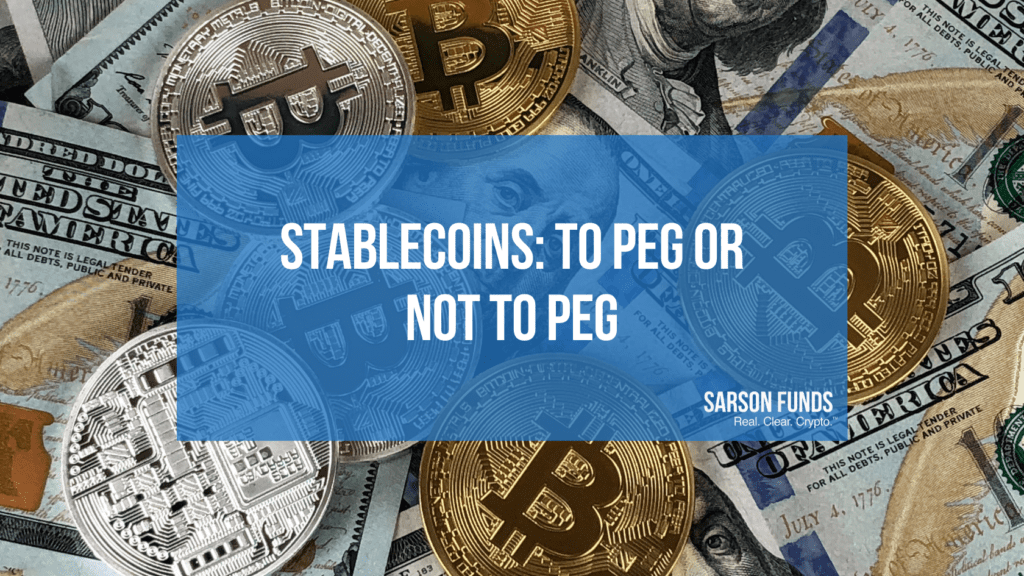
Stablecoins are an increasingly popular way for people who are looking to get into cryptocurrencies. They are a type of cryptocurrency that have their value pegged to another asset. Currently there are 4 different types, which are identifiable by the underlying collateral: fiat backed, crypto backed, commodity backed and algorithmic.
Fiat-Backed
Fiat-backed stablecoins are the most popular and are collateralized 1 for 1 by fiat currency. This type of stablecoin is considered an off-chain asset because it is not backed by another type of cryptocurrency. Fiat collateral remains in reserve with a central issuer or financial institution, and must remain proportionate to the number of stablecoin tokens in circulation. Examples of some of the best-known fiat-backed stablecoins include tether (USDT), trueUSD (TUSD), gemini dollar (GUSD), and Paxos Standard (PAX). They require a custodian and are also subject to regular audits to ensure the reserves are sufficient.
Cryptocurrency-Backed
Crypto-backed stablecoins are backed by another cryptocurrency as collateral and are considered on-chain. These types of stablecoins employ smart contracts instead of relying on a central issuer. Buyers of crypto-backed stablecoins lock their cryptocurrency into a smart contract in order to obtain tokens of equal representative value. These types are prone to risk because they are backed by a volatile asset, for example ETH. They are supposed to be over-collateralized in order to provide a buffer against price fluctuations in the (crypto) collateral asset. In order to withdraw, you put your stablecoin back into the same smart contract. An example is DAI.
Commodity-Backed
Commodity-backed stablecoins are collateralized against physical assets such as precious metals, oil and real estate. The most popular is gold, for example Tether Gold (XAUT) and Paxos Gold (PAXG). The downside to this is that as the commodities market price fluctuates, so does the value of the stablecoin. They are less common though they do provide a hedge against crypto volatility. Commodity-backed stablecoins require an issuer similar to fiat – so they are not trustless.
Algorithmic
Algorithmic stablecoins use specialized algorithms and smart contracts to help with the price stability and protect against volatility even though they are not asset-backed. As the market price falls below a certain pre-set threshold, the algorithmic stablecoin system will reduce the number of tokens in circulation to help manage the supply of tokens in circulation in a very similar way that controlling authorities do for fiat currencies. If it exceeds the threshold, new tokens enter into circulation. Since it relies on an algorithm, the inherent risk of this type of stablecoin is due to system failure such as bugs, which is not common, but has happened in the case of YAM Finance.
Hybrid Stablecoins are more complex and use a mix of different features of the other types of stablecoins.
Differing Views
All stablecoins are minted on a blockchain and are designed to solve some of the concerns around cryptocurrencies. Price stability is built directly into the assets themselves in an effort to reduce the inherent risk of volatility for other types of cryptocurrency.
There are differing feelings around stablecoins. The proponents feel that stablecoins are the bridge between cryptocurrencies and traditional money and that they take the best of both worlds; by design, they offer the decentralized benefits of virtual currencies with the stability and utility as a medium of exchange previously reserved for only fiat currencies.
Stablecoins integrate traditional finance with DeFi in multiple ways. They are seens as a suitable store of value because of their designed stable nature, which encourages use in everyday transactions. They can be used to earn a yield (aDAI) and present a vehicle for crypto adoption in loan and credit markets. Since the transactions are settled on a blockchain, they provide the privacy benefits of decentralization, are faster, more affordable than fiat, and provide quicker mobility of crypto assets through the ecosystem.
Policy makers and regulators are concerned of the widespread adoption of stablecoins for various reasons, such as concerns surrounding transparency, potential risks to end users, stability of the current financial system and what economists call the “speculative attack” which is the result of lack of consumer faith in how well the stablecoin is collateralized.
As the industry continues to evolve, the developers and industry leaders are constantly learning and improving upon the issues, fears and concerns surrounding the crypto market. We are continuously seeing improvement with newer updates such as carbon neutrality and data sovereignty to name a couple.
Written by Jenell McLaughlin
Disclosures: Not investment advice. It should be assumed that Sarson Funds or its affiliated managers hold positions in all projects that are discussed. It is not possible to invest in any project directly through Sarson Funds, Inc. or its affiliated managers. Any investment product offered by managers affiliated with Sarson Funds should be assumed to be only available to Accredited Investors and subject to the individual terms and conditions of that offering including but not limited to those eligibility requirements associated with U.S. Securities Regulation D, section 506c. Talk with your financial advisor before making any investment decisions or have them contact Sarson Funds directly at [email protected]








